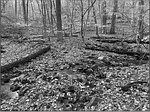Pondering the Effects of Climate Change in Palisades, NY
We have been hearing a great deal about climate change lately, especially after the damage sustained from Hurricane Ida. While flooding from large rain events has become an all-too-common scenario, it was Superstorm Sandy, in 2012, that exposed our vulnerability to sea level rise and storm surge. It isn’t difficult to follow the still-warm trail back to humanity’s altering of Earth’s atmosphere, to assign at least some of the blame. Sandy was a Category 3 storm at its strongest, but upon landfall in our area, she was categorized as a post-tropical cyclone with hurricane-force winds. Even at that reduced ranking, the damage inflicted on our region was profound. The storm-surge impact in Piermont, coupled with downed trees and power outages, affected our area for weeks. All told, Sandy was estimated to have cost a whopping $70 billion and killed 233 people from the Caribbean to Canada. In the years since Sandy, we have witnessed an increase in droughts and fires in our western states, and extreme rainfall and flooding in the east. Large storms are increasingly common in all seasons. These types of events come with real costs, not only in monetary terms, but in our decreasing sense of security and safety in the places we choose to live.
The causal linkages to climate change can be easily imagined for an event like Sandy. However, climate change affects us in less dramatic ways. As a tree-ring scientist at the Lamont-Doherty Earth Observatory (LDEO), I study climate and forest ecology from the boreal forests of North America to the tropical highlands of Mon- soon Asia. It has become evident that anthropogenic global warming (AGW) alters the dynamics of forests in the most sensitive and important biomes on Earth. Boreal forests now suffer the effects of drought and fire, increased insect damage and melting of the underlying permafrost. Tropical forests are under enormous pressure to make way for agriculture and industry, and to absorb the migration of those fleeing drowning deltas. Temperature over western North America is threatening to undermine ecosystems upon which multiple species rely, ours included.
One doesn’t have to travel far to see these effects. A stroll through our nearby Lamont Sanctuary Forest, adjacent to the southern border of the LDEO, provides an example of the interconnectedness of climate and ecology. As recently as the 1980s the LSF was dominated by forests of eastern hemlock, which have since been ravaged by the hemlock woolly adelgid (HWA), an aggressive invasive aphid species that arrived to the US in the early 20th century. Warming has created optimal conditions that have allowed the HWA to thrive, and fostered the replacement of hemlock with species more comfortable in more southerly biomes. The legacy of these hemlock forests is still evident, only now the old forest lies in repose, releasing their carbon back into the atmosphere, in a perverse feedback loop that amplifies the effects of AGW.
I teach a class at Columbia University entitled “The Effects of Climate Change on Global Forests,” where we dig deeply into the current scientific literature. It is all too easy to succumb to pessimism in the face of the evidence that we may have already passed the tipping point of being able to mitigate the damage caused by our activities on planet Earth. Nature, however, has a way of adapting to changes on such a scale, even if we may not. We can either take control of our own activities or nature will take control for us.


